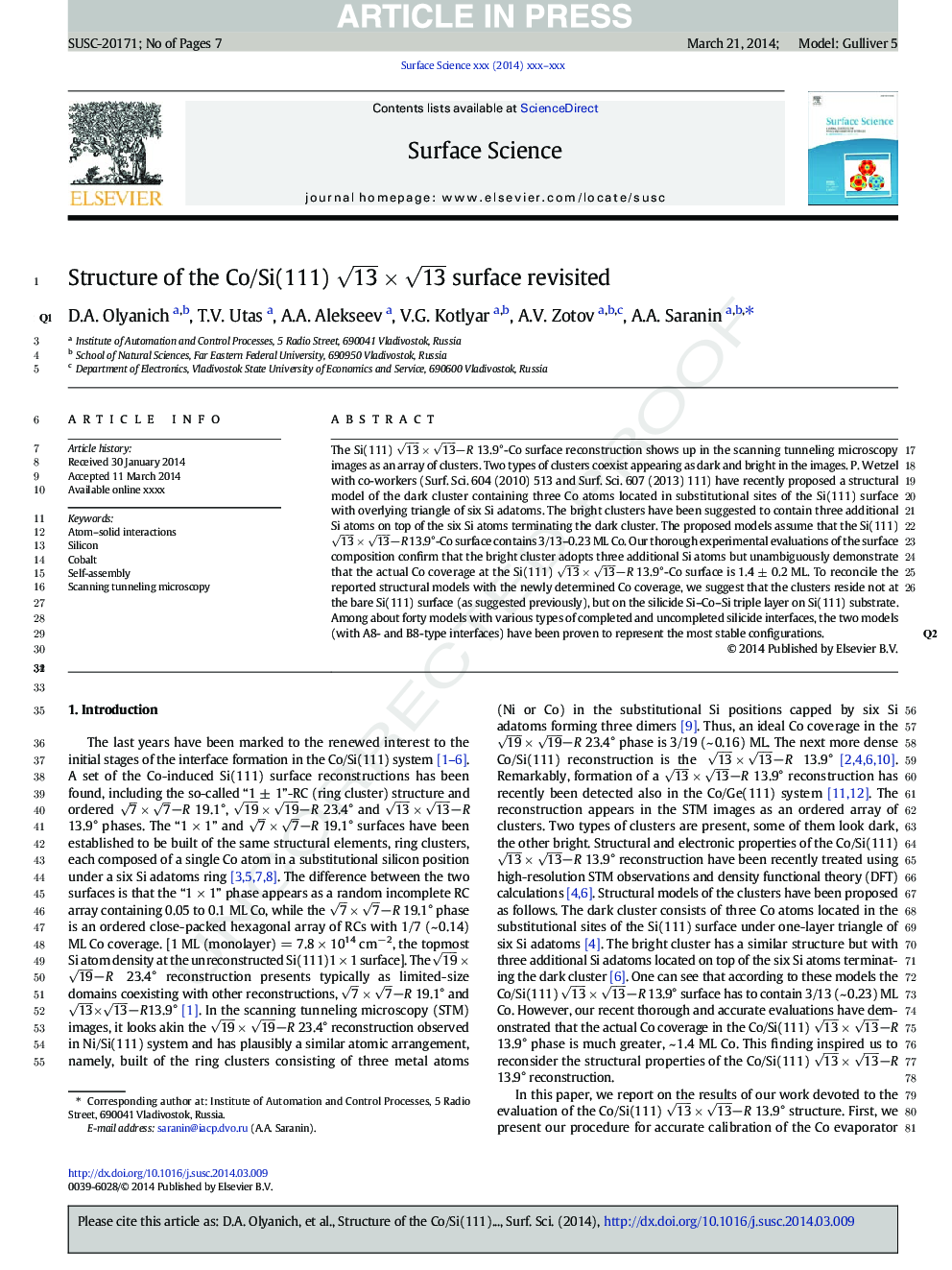| Article ID | Journal | Published Year | Pages | File Type |
|---|---|---|---|---|
| 5422154 | Surface Science | 2014 | 7 Pages |
Abstract
The Si(111) 13Ã13âR 13.9°-Co surface reconstruction shows up in the scanning tunneling microscopy images as an array of clusters. Two types of clusters coexist appearing as dark and bright in the images. P. Wetzel with co-workers (Surf. Sci. 604 (2010) 513 and Surf. Sci. 607 (2013) 111) have recently proposed a structural model of the dark cluster containing three Co atoms located in substitutional sites of the Si(111) surface with overlying triangle of six Si adatoms. The bright clusters have been suggested to contain three additional Si atoms on top of the six Si atoms terminating the dark cluster. The proposed models assume that the Si(111) 13Ã13âR 13.9°-Co surface contains 3/13-0.23 ML Co. Our thorough experimental evaluations of the surface composition confirm that the bright cluster adopts three additional Si atoms but unambiguously demonstrate that the actual Co coverage at the Si(111) 13Ã13âR 13.9°-Co surface is 1.4 ± 0.2 ML. To reconcile the reported structural models with the newly determined Co coverage, we suggest that the clusters reside not at the bare Si(111) surface (as suggested previously), but on the silicide Si-Co-Si triple layer on Si(111) substrate. Among about forty models with various types of completed and uncompleted silicide interfaces, the two models (with A8- and B8-type interfaces) have been proven to represent the most stable configurations.
Related Topics
Physical Sciences and Engineering
Chemistry
Physical and Theoretical Chemistry
Authors
D.A. Olyanich, T.V. Utas, A.A. Alekseev, V.G. Kotlyar, A.V. Zotov, A.A. Saranin,
